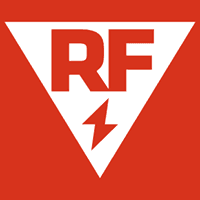KNOW THE CAUSES
Tropical Storms and Hurricanes
Tropical storms and hurricanes pack a triple punch - high winds, soaking rain and flying debris. They can cause storm surges to coastal areas and bring heavy rainfall. This, in turn, causes flooding hundreds of miles inland. When hurricanes weaken into tropical storms, they produce rainfall and flooding that can be especially damaging since the rain collects in one place.
Spring Thaw
During the spring, frozen land prevents melting snow or rainfall from seeping into the ground. Each cubic foot of compacted snow contains gallons of water and once the snow melts, it can result in the overflow of streams, rivers and lakes. When spring storms occur, the result is often serious spring flooding.
Heavy Rains
Several areas of the country are at high risk of flooding due to heavy rains. This excessive amount of rainfall can happen throughout the year, putting your property at risk.
Levees & Dams
Levees are designed to protect against a certain level of flooding. However, levees can and do decay over time, making maintenance a serious challenge. Levees can also overflow, or even fail, during large floods, causing more damage than if the levee had not existed.
Flash Floods
A flash flood is a rapid flooding of low-lying areas that happens in less than six hours, and is caused by intense rainfall from a thunderstorm or several thunderstorms. Flash floods can also occur from the collapse of a man-made structure or ice dam. Flash floods are the number one weather-related killer in the U.S. They can roll boulders, tear out trees, and destroy buildings and bridges.
New Development
Construction and development can destroy land's natural drainage and create brand new flood risks. This is because new buildings, parking lots and roads mean less undeveloped land to absorb excess precipitation from heavy rains, hurricanes and tropical storms.
KNOW THE HAZARDS
YOUR HOME
When building or modifying your home:
- Avoid building in a flood-prone area unless you elevate and reinforce your home.
- Elevate the washer, dryer, furnace, water heater and electric panel 12 in. above projected flood levels.
- Have a licensed electrician raise electrical components (switches, sockets, circuit breakers and wiring) at least 12 in. above your home's projected flood level.
- Install "check valves" in sewer traps to prevent floodwater from backing up into the drains of your home.
- Buy and install sump pumps with back-up power.
- For drains, toilets and other sewer connections, install backflow valves or plugs to prevent floodwaters from entering.
- In areas that could get wet, use a GFCI (Ground-Fault Circuit Interrupter-is used to protect people from electrical shock hazards caused by malfunctioning electrical appliances) circuit to avoid the risk of shock or electrocution.
- Anchor the fuel tank. A fuel tank can tip over or float in a flood, causing fuel to spill or catch fire.
- Fuel tanks should be securely anchored to the floor.
- Propane tanks are the property of the propane company: You will need written permission to anchor them.
WEATHER ALERTS
Understand the weather alerts from NOAA. (National Oceanic and Atmospheric Administration. NOAA is a Federal agency focused on the condition of the oceans and the atmosphere. NOAA's National Weather Service provide weather, water and climate data, forecasts and warnings for the protection of life and property and enhancement of the national economy.)
Flash Flood Watch
Flash flooding is possible. Be ready to move to higher ground if a flash flood warning is issued or flooding is reported. These watches are issued when flooding is expected to occur within six hours after heavy rains have ended.
Flash Flood Warning
Flash flooding that could affect life and property is occurring or is expected to occur within six hours. If advised to evacuate, do so: Seek higher ground on foot immediately.
Flood Watch
Flooding is possible. Monitor NOAA
alerts or local media outlets for the latest information.
Flood Hazard
The possible risk to life and damage to property resulting from flooding. The degree of hazard varies according to the type and severity of each flood.
Flood Potential Outlook
Information is provided in late winter about possible flooding during the spring thaw.



